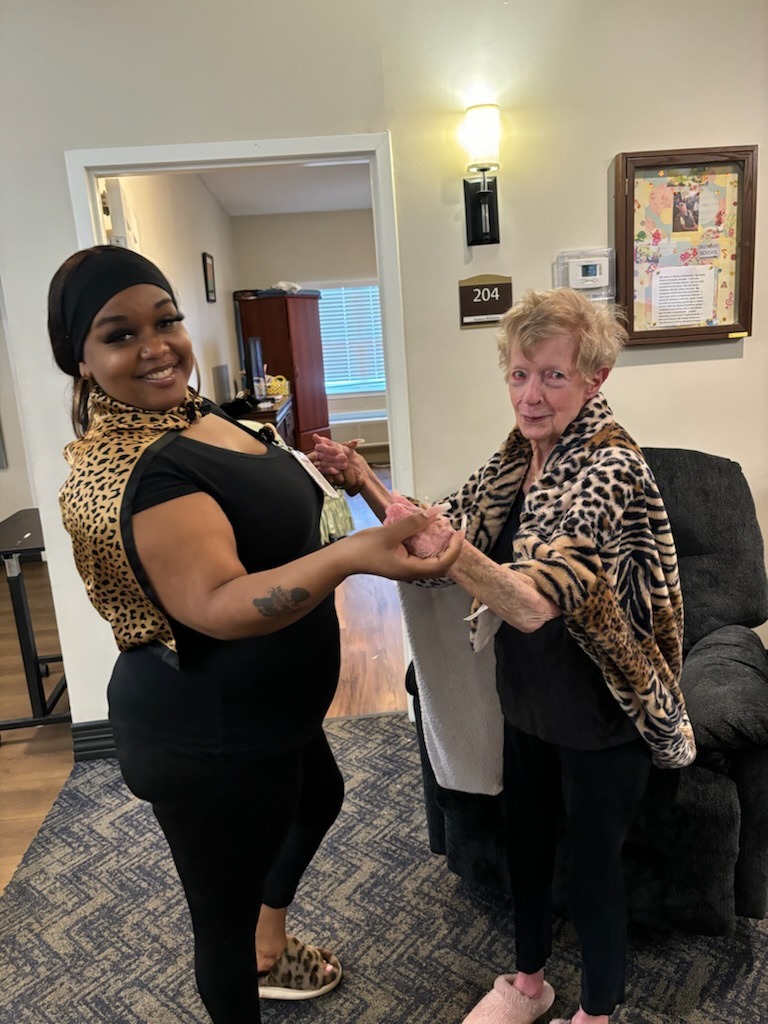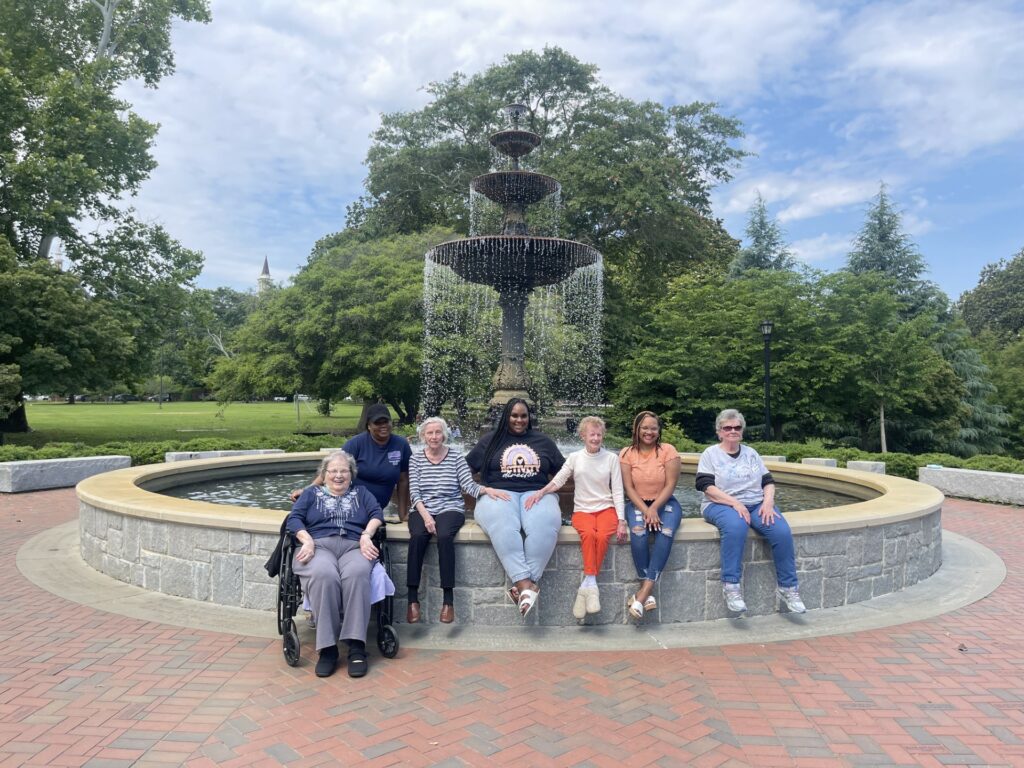Caring for a loved one with Alzheimer’s can be both challenging and deeply rewarding. It’s a journey filled with unique experiences that require patience, empathy, and a willingness to learn. Did you know that Alzheimer’s affects over 50 million people worldwide, with numbers steadily rising each year?


Despite its prevalence, each individual’s experience with Alzheimer’s is distinct, and so are their needs. Understanding this can transform how we approach caregiving, whether at home or in a community setting. By embracing compassionate and practical strategies, we can make a significant difference in the lives of our loved ones, fostering moments of connection and joy amidst the challenges.
Section 1: Importance of Understanding
Understanding Alzheimer’s and its symptoms is crucial for all family members, not just primary caregivers. This collective awareness helps create a supportive environment and ensures that everyone can contribute to the care and well-being of the affected family member.
Recommended Actions:
Educate Yourself and Your Family:
- Attend Workshops and Seminars: Look for local or online workshops on Alzheimer’s care. Many organizations, such as the Alzheimer’s Association, offer free educational resources.
- Read Books and Articles: Find books written by experts and caregivers to get a comprehensive understanding of the disease. Some recommended reads include “The 36-Hour Day” by Nancy L. Mace and Peter V. Rabins.
- Watch Documentaries: Visual content can be very impactful. Documentaries like “Alive Inside” show real-life experiences of people with Alzheimer’s and their caregivers.
Create a Family Action Plan:
- Hold Regular Family Meetings: Discuss the progress and needs of the affected family member. Ensure everyone is aware of their responsibilities and any changes in care routines.
- Delegate Responsibilities: Divide tasks among family members, such as managing medical appointments, overseeing financial matters, or simply spending quality time with the person.
- Use Technology: Utilize apps designed for caregiving coordination, like CaringBridge or Lotsa Helping Hands, to keep everyone informed and organized.
Stay Informed and Connected:
- Join Support Groups: Participate in local or online support groups where you can share experiences and gain insights from other families facing similar challenges.
- Stay Updated on Research: Follow credible sources for the latest research and developments in Alzheimer’s treatment and care. Websites like the National Institute on Aging and Alzheimer’s Association provide regular updates.
Focus on Empathy and Communication:
- Listen Actively: Encourage family members to listen without judgment and validate the feelings and experiences of the person with Alzheimer’s.
- Use Positive Language: Teach your family to use positive, reassuring language. Avoid correcting or arguing with the person with Alzheimer’s, as it can lead to frustration and anxiety.
- Be Patient and Flexible: Remind everyone that adaptability is key. The needs and behaviors of the person with Alzheimer’s will change over time, requiring ongoing adjustments in care and communication strategies.
Section 2: Creating a Safe and Welcoming Environment
Home Adaptations: Tips for Making the Home Safer and More Accessible for Everyone
Creating a safe and welcoming environment at home is crucial for the well-being of a family member with Alzheimer’s. Here are some practical tips to help make the home more secure and comfortable:
Reduce Clutter:
- Keep pathways clear of unnecessary items to prevent trips and falls.
- Remove loose rugs or secure them with non-slip mats.
- Store frequently used items in easily accessible places.
Improve Lighting:
- Ensure all areas of the home, especially stairways and hallways, are well-lit.
- Use nightlights in the bedroom, bathroom, and hallway to prevent disorientation at night.
Install Safety Devices:
- Place grab bars in the bathroom near the toilet and in the shower.
- Install handrails on both sides of staircases.
- Use stove guards and automatic shut-off devices in the kitchen.
Simplify Navigation:
- Label rooms and cabinets with pictures or words to help with recognition.
- Use contrasting colors to differentiate between floors, walls, and furniture.
Secure Dangerous Items:
- Lock up medications, cleaning supplies, and any sharp objects.
- Consider using child-proof locks for cabinets and drawers containing hazardous items.
Useful Technology: Devices and Apps That Can Help in Daily Care
Technology can be a valuable ally in caring for a family member with Alzheimer’s. Here are some devices and apps that can enhance safety and provide peace of mind:
GPS Trackers:
- Devices like GPS-enabled watches or bracelets can help track the person’s location in case they wander off.
- Apps such as “Find My” on smartphones can be used to monitor their whereabouts.
Medication Reminders:
- Electronic pill dispensers with alarms ensure medications are taken on time.
- Apps like Medisafe send reminders to both the user and the caregiver.
Home Monitoring Systems:
- Install motion sensors and cameras to monitor activity within the home.
- Smart home systems like Amazon Alexa or Google Home can be set up to assist with reminders and control home devices.
Cognitive Stimulation Apps:
- Apps like Lumosity or BrainHQ offer games and activities designed to stimulate cognitive function.
- Use video calling apps to maintain social connections with family and friends.
Memory Care Community: How to Ensure the Community Environment is Supportive and Welcoming
If your loved one is in a memory care community, it’s important to ensure the environment is conducive to their well-being:
Evaluate the Environment:
- Visit the community regularly and observe the cleanliness and maintenance of the facilities.
- Ensure that the community has secure areas to prevent wandering and ample outdoor spaces for fresh air and activities.
Engage with Staff:
- Build a rapport with the caregivers and staff to understand their approach and ensure they are trained in dementia care.
- Communicate your loved one’s preferences and needs to the staff to ensure personalized care.
Participate in Activities:
- Encourage family members to join in community activities and events to provide support and create a sense of familiarity.
- Check that the community offers a variety of activities that cater to different interests and abilities.
Personalize the Space:
- Decorate your loved one’s room with familiar items, photos, and personal belongings to make it feel more like home.
- Use memory boxes or albums filled with pictures and mementos to stimulate memories and conversations.
Memory Care Community Evaluation Checklist:
- Regularly visit the community and assess cleanliness and maintenance.
- Ensure secure areas and outdoor spaces are available.
- Build rapport with caregivers and ensure they are trained in dementia care.
- Communicate your loved one’s preferences and needs to the staff.
- Encourage participation in community activities.
- Ensure a variety of activities are available.
- Personalize your loved one’s space with familiar items.
Section 3: Effective Communication
Communication Techniques: Strategies for Improving Communication with a Person with Alzheimer’s
Simplify Your Language:
- Use Short, Simple Sentences: Break down instructions or information into small, manageable chunks.
- Avoid Jargon and Complex Words: Use clear and straightforward language to prevent confusion.
Be Patient and Give Time to Respond:
- Allow Extra Time: Give the person ample time to process information and respond. Avoid rushing them.
- Encourage and Reassure: Use positive reinforcement and encouragement to boost their confidence.
Stay Calm and Positive:
- Maintain a Calm Tone: Speak in a calm, gentle, and reassuring tone to avoid causing anxiety or agitation.
- Positive Reinforcement: Acknowledge their efforts and successes, no matter how small.
Ask One Question at a Time:
- Single-Step Instructions: Give instructions one step at a time, rather than overwhelming them with multiple tasks.
- Yes/No Questions: Use yes/no or simple choice questions to make it easier for them to respond.
Use Names and Specific References:
- Refer to People by Name: Use names instead of pronouns to avoid confusion.
- Be Specific with Items: Clearly describe objects or activities instead of using vague terms.
- Body Language and Tone: The Importance of Non-Verbal Communication
- Non-verbal communication can often convey more than words, especially for someone with Alzheimer’s who may struggle with verbal communication.
Maintain Eye Contact:
- Engagement: Eye contact helps maintain focus and shows that you are attentive and interested.
- Comfort: It can provide comfort and reassurance.
Use Facial Expressions:
- Express Emotions: Smile to convey happiness and encouragement. Avoid showing frustration or impatience.
- Reassurance: Use a calm and gentle expression to reassure the person.
Mind Your Body Language:
- Open Posture: Keep your body language open and approachable, with arms relaxed and hands visible.
- Proximity: Maintain an appropriate distance to make the person feel comfortable and not overwhelmed.
Physical Touch:
- Gentle Touches: A gentle touch on the hand or shoulder can convey support and affection.
- Respect Boundaries: Be mindful of their personal space and preferences regarding physical contact.
Exercises for Improving Communication
Role-Playing Scenarios:
- Practice Situations: Role-play common situations, such as giving instructions or asking questions, to practice clear and simple communication.
- Feedback: Provide constructive feedback to each other on what worked well and what could be improved.
Non-Verbal Communication Drills:
- Facial Expressions Exercise: Practice using different facial expressions to convey various emotions. Have family members guess the emotion being expressed.
- Body Language Awareness: Observe each other’s body language and discuss how it affects communication. Practice open and positive body language.
Listening and Patience Practice:
- Silent Conversation: Have a conversation where only one person speaks while the other listens without interrupting. Switch roles and discuss the experience.
- Timed Responses: Practice giving each other ample time to respond during a conversation, counting silently to five before replying.
Memory Games:
- Name Repetition Game: Use games that involve remembering and repeating names or simple sequences to practice clarity and reinforcement.
Object Identification: Place common objects in front of the person and practice naming them together, using simple and clear language.

Caring for a loved one with Alzheimer’s is a journey that requires patience, empathy, and continual learning. By understanding the disease and employing compassionate strategies, family members can create a supportive environment that enhances the well-being of their loved one. Simple actions like educating yourself, creating a safe home, using technology, and practicing effective communication can make a significant difference.
For those seeking to enhance the quality of life for their loved ones with Alzheimer’s, Madison Heights at The Prado offers exceptional care with a focus on comfort, respect, and dignity. Our dedicated team is committed to ensuring that every resident lives life to the fullest. We invite you to visit us to learn more about our passionate memory care services and how we can support your family in this journey.



